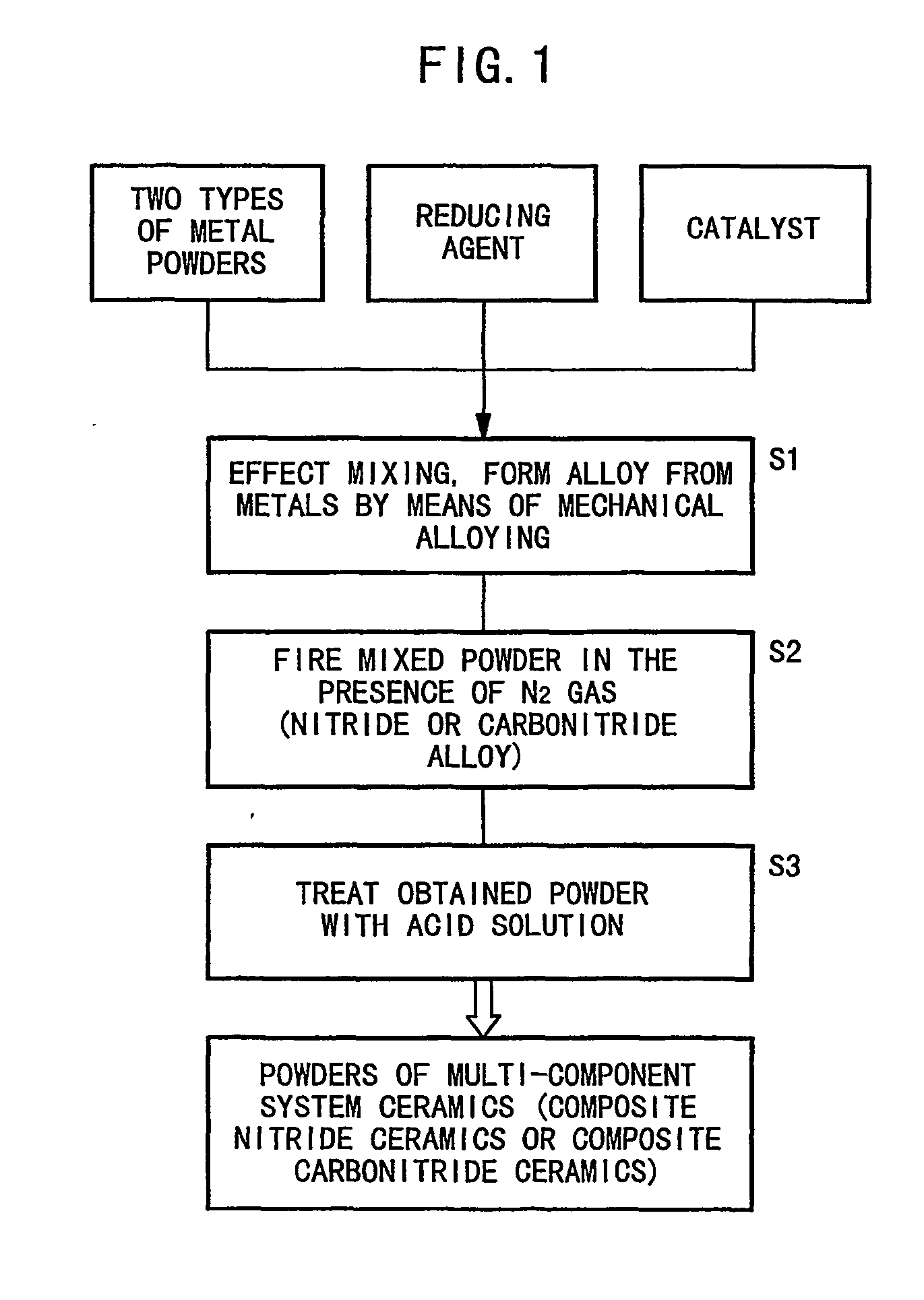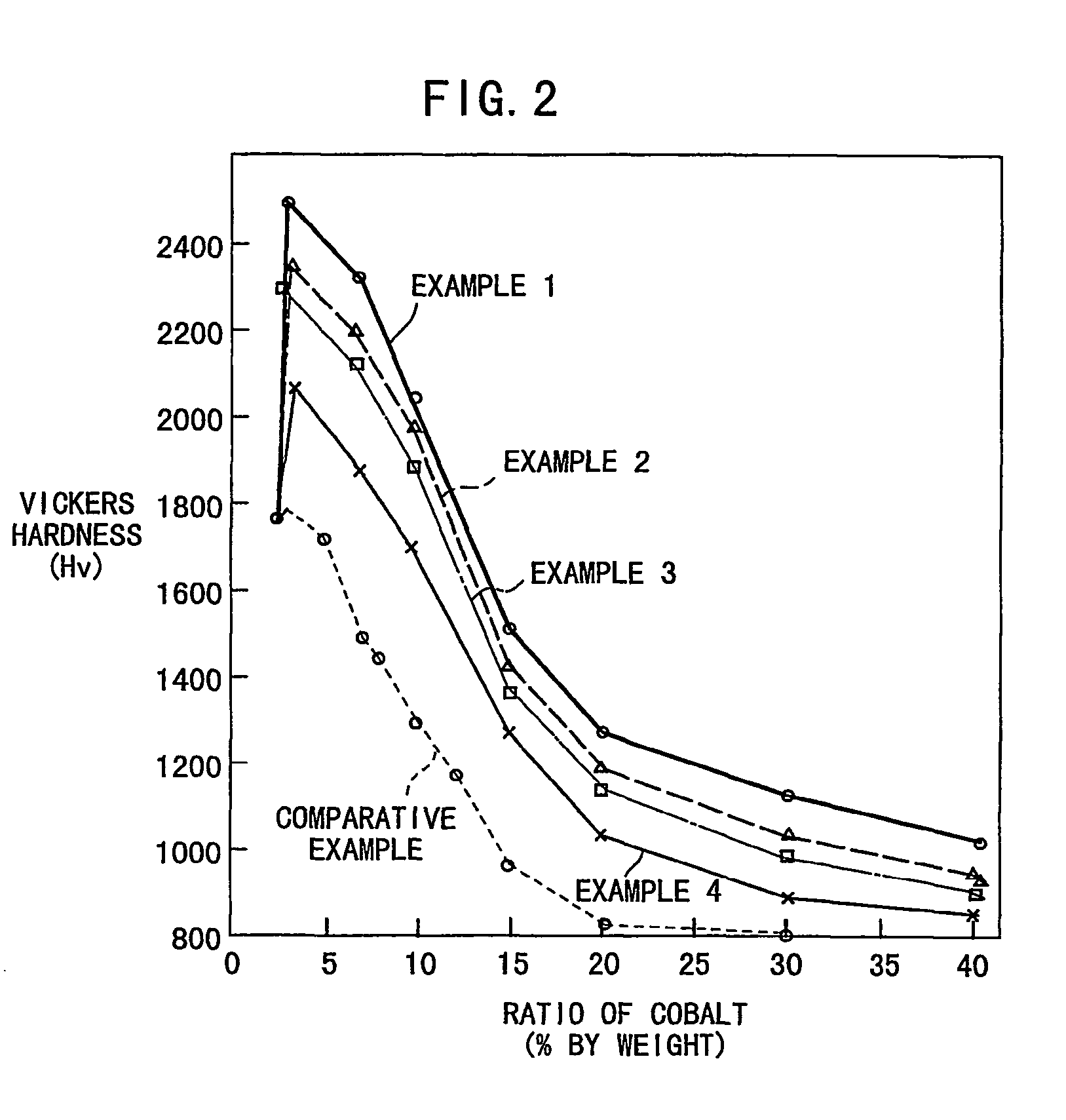Composite material
a technology of composite materials and materials, applied in the field of composite materials, can solve the problems of inability to efficiently form thin films, high cost of composite materials containing diamonds or c-bns, and poor oxidation resistance of composite materials, and achieve the effects of facilitating the growth of ceramic powder grains in multi-component systems, high strength, and increased relative density
- Summary
- Abstract
- Description
- Claims
- Application Information
AI Technical Summary
Benefits of technology
Problems solved by technology
Method used
Image
Examples
Embodiment Construction
[0059] W--Ti--Nb--N--C system ceramic powder, W--Ti--Nb--Al--N--C system ceramic powder, W--Ti--Zr--Nb--Ta--Al--N-C system ceramic powder, or W-Ti-Zr-Hf-Nb-V-N-C system ceramic powder and Co powder were mixed at a variety of weight ratios. The multi-component system ceramic powder had an average grain size of 2.5 .mu.m, and the Co powder had an average grain size of 1.4 .mu.m.
[0060] Each of the mixed powders was compacted into a rectangular parallelepiped of 70 mm.times.20 mm.times.20 mm at a pressure of 150 MPa. Only the compact, which contained W--Ti--Nb--N--C system ceramic powder, was preliminarily sintered at 927.degree. C. for 15 minutes, and then a xylene solution dispersed with h-BN was spray-applied to the surface of the preliminarily sintered product. Further, the preliminarily sintered product was sintered by performing a sintering treatment in a nitrogen atmosphere at 1400 to 1500.degree. C. for 60 minutes to obtain a composite material. On the other hand, each of the ot...
PUM
| Property | Measurement | Unit |
|---|---|---|
| temperature | aaaaa | aaaaa |
| temperature | aaaaa | aaaaa |
| grain size | aaaaa | aaaaa |
Abstract
Description
Claims
Application Information
 Login to View More
Login to View More - R&D
- Intellectual Property
- Life Sciences
- Materials
- Tech Scout
- Unparalleled Data Quality
- Higher Quality Content
- 60% Fewer Hallucinations
Browse by: Latest US Patents, China's latest patents, Technical Efficacy Thesaurus, Application Domain, Technology Topic, Popular Technical Reports.
© 2025 PatSnap. All rights reserved.Legal|Privacy policy|Modern Slavery Act Transparency Statement|Sitemap|About US| Contact US: help@patsnap.com



